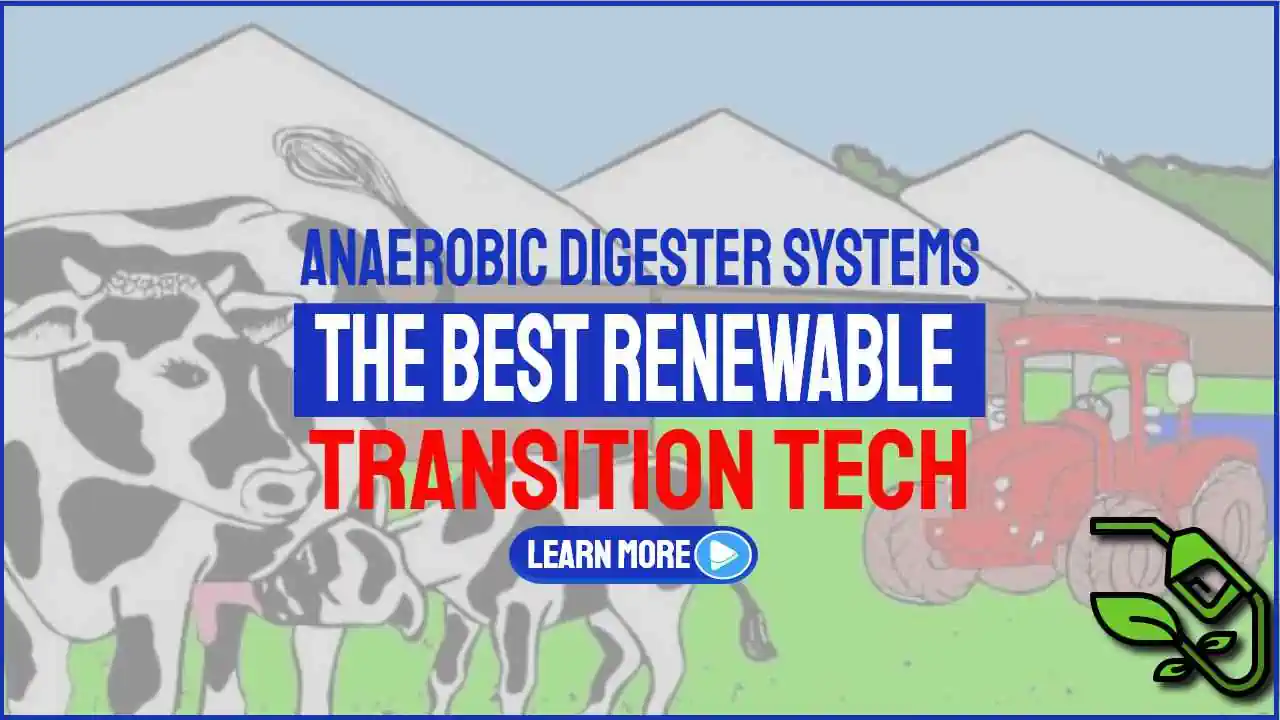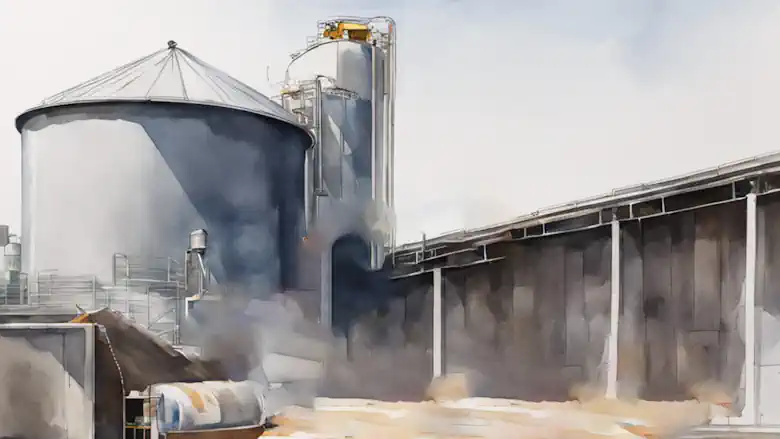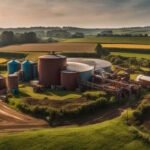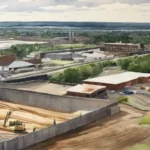This article looks at the benefits and drawbacks of anaerobic digestion systems. This post will provide you with some helpful hints for building your own digester.
The Development of Anaerobic Digester Technology
Sir Humphry Davy identified the presence of methane in cattle manure gases in the 18th century, which led to the development of anaerobic digester technology. The earliest recorded anaerobic digester was built in a leper colony in Bombay, India, in 1859. The city of Exeter, England, created an anaerobic septic tank in 1895. It produced gas for the sewage gas destructor light, which treated the sewer. In Hampton, London, a dual-purpose septic tank was built in 1904.
Digestive System Upkeep
Anaerobic digester systems require regular maintenance to function properly. Routine inspections and cleanings of your anaerobic digester system are recommended for the greatest results. If you own a commercial or industrial building, you must inspect your anaerobic digester system on a regular basis. This will ensure that it continues to operate and will increase its lifespan. In addition, good maintenance will save you money in the long run.
If you want to establish an anaerobic digester, you must understand how to properly manage it. You should check the pH and alkalinity of the digester on a regular basis, as well as make sure the valves are free to operate and the pipework is not clogged. If you are unsure about your maintenance abilities, it is worth spending a little extra to hire a skilled maintenance provider to get the most out of the system. You’ll have a substantially longer life expectancy once you’ve established an anaerobic digester.

Benefits of Anaerobic Digester Systems
Anaerobic digester systems have numerous advantages. The most obvious benefit is lower electricity costs. Anaerobic digester sewage will be substantially less expensive than standard wastewater treatment. You will not only save money, but you will also put less load on the neighbourhood sewer system. You will also reduce the amount of wastewater that you release. It is worthwhile to consider an anaerobic digestion system for your company!
What You Need to Know About Feeding a Digester
Although anaerobic digester systems appear straightforward, feeding them sufficient organic waste requires a great deal of skill when compared to other techniques of manure management. You may need to engage more staff to maintain the system to run anaerobic digester systems, and they may need to be WAMITAB certified in the UK.
A correctly constructed commercial biogas digester system, on the other hand, will be instrumented to automatically open and close the valve and run the pumps when needed, without the need for operator intervention. When it comes time to remove the surplus sludge and methane produced by the anaerobic digester, some systems need the operator to do nothing more than click the appropriate buttons. A badly built system, on the other hand, will tend to clog, and when this happens, the SCADA system will also fail, and the entire biogas plant system would need to be maintained manually.
Biogas Systems Require Routine Inspections
Anaerobic digester systems must be monitored on a regular basis to verify that the biogas produced is safe and effective. To ensure that the biogas is flowing properly, inspect the input and exit pipelines. Because this is a critical component of a waste management system, it is critical to select feedstocks appropriately. A successful anaerobic digester system can save energy and water usage by up to 60% if frequent checks are performed properly and any problems are addressed as soon as they are discovered.
A digester is similar to a living animal. When they become ill, they must see a veterinarian so that they can be treated and restored to health. The digester is teeming with bacteria that must be kept alive. If not, it won’t be long before they start to die, and when that happens, the biogas flow ceases, as does the cash from the energy the system produces.
Anaerobic digesters should be inspected on a regular basis. Each one should be inspected every six to eight weeks by checking operating data and walking around and listening for any noises that signal a faulty pump or mixer gearbox in the system that needs to be repaired. There is no higher importance than checking on a daily basis to ensure that everything is in functioning order.
Only export electricity when you will be paid the most for it.
While a large digester may generate electricity for the farmhouse and all the buildings, including the barns, it is considered too powerful for a few tiny residences. Instead, you may power an entire housing development at all hours of the day and night, and the fees you receive for the electricity can be enormous. As a result, you can sell biogas at a premium.
In these instances, before acquiring an anaerobic digester system, you should evaluate its power capacity.
Remember that, while your digester can easily generate power indefinitely, you may be able to earn more money simply by exporting your electricity during high-demand periods. You can talk to your technology provider about how many hours per day your anaerobic digester should run at full capacity in order to generate the most money by being paid extra to provide power during a storm or a power outage.
Anaerobic Digesters’ Applications
While anaerobic digesters are ideally suited for agricultural waste, they can also be used to handle other types of waste. Food processing residuals such as whey and beer, for example, can be transformed into biogas and sold. Distillery waste can also be utilised as a feedstock for anaerobic digesters. These are just a few of the reasons why anaerobic digesters are becoming a more popular waste management option.
Anaerobic digesters are used to generate energy. They are advantageous to all industries and businesses. They generate biogas and digestate. Both are useful. This reduces the overall cost of the process in anaerobic digester systems.
Digestate is a Beneficial Fertilizer
Digestate is an excellent natural fertiliser. Aside from producing biogas, anaerobic digestion techniques are also effective at lowering pollution loading below the level of water-borne pollution that occurs when. Some even generate electricity and heat from their garbage. The resulting gas from anaerobic digester systems is known as “biogas” up until further purification processes clean it up to become biomethane. There are also advantages for businesses that use anaerobic digestion when developing net-zero emission reduction programmes.
Benefits of Anaerobic Digestion
When the procedure is finished, the products will be digested to produce biogas or digestate. It has a number of advantages over other approaches. Some of the major things that should be examined in a system before you start it are listed below.
Anaerobic digestion is a low-energy method that can be utilised to minimise garbage in landfills. It’s a great alternative to fossil fuels, and methane from anaerobic digestion plants is used in the power grid to power homes, companies, and other institutions. It is carbon neutral and can be used in place of fossil fuels. It has numerous environmental benefits. The procedure may even be beneficial to the environment.
Anaerobic digestion can generate huge amounts of methane and carbon dioxide. It is a cost-effective alternative to landfill, and each tonne of food waste treated through anaerobic digestion saves around 0.5 to 1.0 tonnes of CO2 from entering the atmosphere. This is just one of the several advantages of anaerobic digestion. What are the advantages of anaerobic digestion?
Anaerobic digestion is an excellent investment opportunity.
Anaerobic digestion is a fantastic investment opportunity that both benefits the environment and generates a profit. It benefits the local community, farmers, energy entrepreneurs, and the government as well. The only disadvantage of anaerobic digestion is the capital expenditure required. It demands a large investment, but the advantages outweigh the costs. A cash flow model can easily absorb the delayed rewards. Anaerobic digestion and the benefits it can provide have various advantages.
Environmental benefits are one of the advantages of anaerobic digestion. The procedure is environmentally friendly and generates no hazardous waste. It is not only eco-friendly, but it also generates renewable energy. It is an excellent option for any anaerobic digester systems organisation. If you’re interested in anaerobic digestion, make sure you do your homework. It is a wonderful solution for businesses to explore for their trash management requirements. Anaerobic digestion has numerous advantages.
Anaerobic Digester Systems: An Excellent Method for Recycling Organic Waste
Anaerobic digestion is an excellent method for recycling organic waste. You can get rid of hazardous microorganisms by using this method. This strategy is an excellent investment for your community as well as the environment. In addition to being ecologically benign, anaerobic digestion can provide direct financial benefits to your company. By offering a beneficial service, it can also help you save money. It may be advantageous to your local economy.
There are a lot of connections between most anaerobic digestion systems. The parts of the newest systems are designed to produce a lot more gas than the parts used in older systems. The following are the primary components of anaerobic digestion plants:
- tanks,
- mixers,
- heating systems, and
- covers.
Anaerobic digestion tank systems are classified into three types:
A complete mix digester (CSTR), a batch flow digester, and a plug flow anaerobic digester are the three types of digesters.
Each of these operations necessitates the use of a unique piece of anaerobic digester systems equipment.

Anaerobic Digestion Systems in Modular Form
A modular anaerobic digestion system provides the greatest amount of flexibility. It can be configured to process a variety of feedstocks.
Following the anaerobic digestion stage, the organic material goes through a pre-processing stage to condition the substrate. All plastic bags are opened in a depackager and separator device to produce the purest organic material output possible. A depackager and separator device may minimise particle size, but not at the expense of smashing up too small plastic fragments. This is due to the fact that doing so would result in undesirable microplastics, along with all of the concerns about the health of small organisms that microplastic pollution involves.
A modular anaerobic digester is a versatile technology that allows for maximum flexibility. The modules can be used to process a wide range of organic feedstocks. This system is extremely adaptable and designed to process a wide range of feedstocks. It can also be tailored to the client’s specific requirements. This adaptability is critical when designing an anaerobic digestion facility and applying anaerobic digester systems.
A Low-Cost Method of Biogas Production
Anaerobic digestion is a low-cost way of producing biogas. During the process, a single anaerobic digester can reduce up to 50% of the bulk of the incoming feed. The procedure is also eco-friendly, as it decreases greenhouse gas emissions and does not require dewatering chemicals.
Anaerobic digestion, on the other hand, has several drawbacks. The plants must be carefully maintained or they will become a nuisance and emit unpleasant odours. However, the odour from anaerobic digester systems is less than that produced when uncomposted farm manure is spread over the land.
This is an environmentally beneficial option for agricultural waste, which is becoming very popular in the EU states. You can find out why this is so, here: https://eurobic11.com/8-things-to-know-about-anaerobic-digestion-in-europe/







So you are saying:
Although anaerobic digestion has its challenges, like the need for meticulous maintenance to avoid odours, it’s still a preferable option as it produces less odour compared to spreading uncomposted farm manure over land.